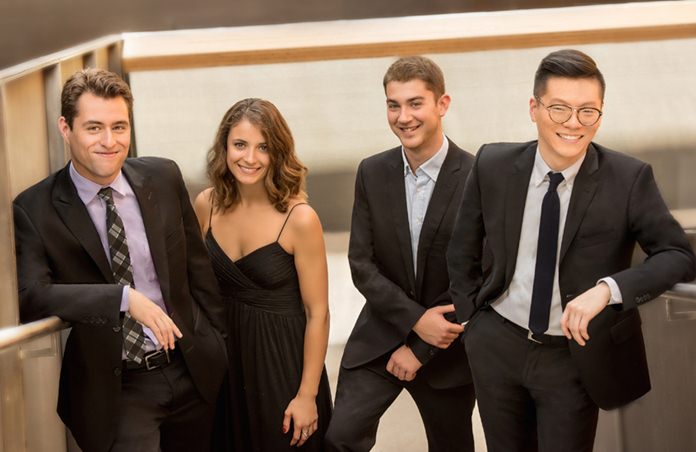
One of the great joys of playing the violin, the viola or the cello is that you have access to the enormous amount of music written for string quartet. Almost every composer you can think of from Haydn to the present day has written something for this ensemble.
Please Support Pattaya Mail
When I was a music student, every Sunday afternoon I’d drive up to North London in my creaking and leaky Austin A40, the roof of which let in so much water that I kept umbrellas inside the car. The trip was necessary because that’s where we played quartets. One of the violinists had the luxury of a large if somewhat drab lounge in her rented flat, big enough for a string quartet to play in comfort. And so it came to pass that Sundays were quartet days. Each week someone would bring along a set of parts and we’d scramble our way through the music. We had a whole lot of fun and got to know a lot of music at the same time.
During the early eighteenth century it was common practice, for reasons of economy to perform pieces for string orchestra with just four players. Oddly enough, few composers seemed to show any interest in composing specifically for a string quartet. That is, until the Austrian composer Joseph Haydn took the idea to heart. He invested so much time and energy in developing the medium that he eventually became known as the “father of the string quartet.”
With a few exceptions, the instrumentation has always been two violins, one viola and one cello and during the eighteenth and early nineteenth centuries the musical structure closely resembled that of the symphony. The usual format was a lively first movement, sometimes preceded by a slow introduction; a second slow movement, a third movement in the form of a minuet and a bright and breezy finale.
I have to admit that this is one of my all-time favourite Haydn quartets. The nickname “Sunrise” comes from the gentle ascending theme at the very beginning of the quartet, played over quiet, sustained chords. The theme returns, sometimes in modified form on several other occasions during the movement.
The quartet is the fourth in a set of six quartets that Haydn wrote in the late 1790s. They’re among Haydn’s most advanced and ambitious quartets. After the peaceful “sunrise” opening, the music scurries off at an extraordinary tempo and the various themes are developed in surprising and delightful ways. There’s a lovely slow movement with a hymn-like opening and as usual, a minuet forms the third movement. But this minuet is far removed from the courtly dance of the same name. The music is full of quirky humour and in the middle section Haydn takes the listener into a mysterious world in which the music evokes the sound of rustic peasant bagpipes. The Finale starts in a stately fashion but the music soon scampers away towards the satisfying conclusion.
This is wonderful music and it’s superbly played too. The Chicago Tribune stated that the Dover String Quartet has “expert musicianship, razor-sharp ensemble, deep musical feeling and a palpable commitment to communication.”
By the time the teenage Mendelssohn wrote this work, the string quartet was well-established. Haydn had written seventy of them and Mozart had written between twenty and thirty. Both Schubert and Beethoven made significant contributions to the repertoire and dozens of other lesser composers had written for the medium.
When Mendelssohn wrote this wonderful quartet in 1827 he was eighteen and pretty well experienced as a composer. He was fascinated by Beethoven’s quartets and evidently studied all the scores he could manage to obtain. This quartet was written a few months after Beethoven’s death and not surprisingly contains noticeable influences.
This is one of Mendelssohn’s most passionate works, starting with a wonderfully moving and intimate opening which breaks into a tumultuous faster section. The opening of the second movement is breathtakingly beautiful and for the third movement, Mendelssohn writes a light Intermezzo with a lilting theme recalling his overture A Midsummer Night’s Dream which he’d composed two years earlier. The last movement (at 32:07) has a frenetic opening that leads into a movement of contrasting moods yet the pressing sense of urgency never seems to leave. And yet, during all this tension, the composer gives hints of the lyrical mood that prevailed earlier in the work. In the closing bars of the quartet, after all the dramatic emotional events, Mendelssohn takes us back to the quiet reflective mood at the start of the work where we began our musical journey.
 |
 |
 |





